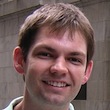Thursday Round-up

on Nov 12, 2009 at 9:33 am
Obituaries for John J. O’Connor, III, the husband of retired Justice Sandra Day O’Connor, are in today’s newspapers. O’Connor died yesterday, at age 79, of complications from Alzheimer’s disease. For obituaries, see The Washington Post, The New York Times, The Los Angeles Times, and the Associated Press (via The Wall Street Journal). Memorial services will be private.
After the jump, a new diversion for Supreme Court buffs.
The WSJ Law Blog and PrawfsBlawg announce the emergence of a Supreme Court fantasy league, FantasySCOTUS.net. The site is the work of recent law school graduate Josh Blackman, who was inspired to design the site after the Citizens United argument in September. Ashby Jones of the WSJ Law Blog explains how the league will work: “[Y]ou pick the way you think the Supreme Court will rule on its docket. You’re awarded points for picking the outcome of the case (whether the court affirms or reverses the lower court); the split (9-0, 8-1, 7-2, 6-3, 5-4, 4-1-4, or fragmented); as well as the justices in the majority and the justices in the dissent. It’s $5 or $10 to join, but the fee is waived for students, law clerks and unemployed attorneys. At the end of the term, all the points accumulated will be tallied, and a winner decreed.â€Â (It should be noted that Doug Berman of Sentencing Law and Policy floated the idea of a fantasy SCOTUS league back in 2006.)
In an article in The Wall Street Journal, Carl Bialik reports that “statisticians have created time machines to answer a wide range of historical hypotheticals,†including how today’s Supreme Court Justices would have ruled on past cases. One model predicts that today’s Justices would issue a five-to-four decision in Roe v. Wade upholding state bans on abortion, but the model’s developer cautions that the result should be taken with “a huge grain of salt and perhaps a tongue in cheek.â€
Pfizer Inc. has announced it will close its $300 million R&D headquarters in New London, Connecticut. Development of the land surrounding the complex was at issue in the Court’s 2005 eminent domain case, Kelo v. New London. The Hartford Courant has coverage.
The Daily Princetonian covers yesterday’s panel discussion at Princeton among Supreme Court journalists, which was broadcast live by C-SPAN. The panelists’ discussion of the public’s understanding of the Court is summarized by the Princetonian as “[t]he more people know about the U.S. Supreme Court, the less they like it.â€
BLT highlights an unusual exchange from Tuesday’s oral argument in Hertz Corp. v. Friend. Todd Schneider, attorney for the respondent, directed a question to the Chief Justice: “Mr. Chief Justice, did the Court have interest in the jurisdictional argument?” Tony Mauro writes at BLT: “Roberts seemed stunned by the question, with a startled look on his face. ‘I don’t know,’ Roberts answered finally, with an annoyed tone and an exaggerated shrug of his shoulders. … ‘I can only speak for one member of the Court, and that one doesn’t.’â€
Finally, a New York Times editorial calls on the Supreme Court to reverse last week’s Second Circuit en banc ruling in Arar v. Ashcroft, a case about the extraordinary rendition of a Syrian-born Canadian citizen based on false information.


